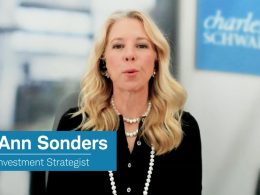“Got Jobs?!”
by Jeffrey Saut, Chief Investment Strategist, Raymond James
October 24, 2011
“President Barack Obama has a jobs plan, in case anyone has been off the planet for the past month. House Republicans now have a jobs plan. Each of the presidential candidates has some kind of employment blueprint. Members of Congress have a bipartisan jobs plan: to keep their seats. Even Washington lobbyists have one, which is to ensure that the grotesque 72,536-page tax code doesn't sacrifice a single line of print. After all, without it they might have to return to the dreary practice of law. Everyone, it seems, has a jobs plan so why not your humble correspondent? I've had plenty to say about Obama's plan, so it's only appropriate to offer some concrete ideas of my own. By calling it a jobs plan, the president and Congress re-enforce the notion that they hold the closely guarded secret of job creation. Most reasonable people understand that the president doesn't create jobs, unless he's in the market for a White House chef, a dog walker for Bo or a horticulturalist for the Rose Garden. And yet, the name implies just that. Employment is the outcome of economic growth. Focus on creating an environment for the economy to flourish, and the jobs will come.”
... Caroline Baum (Bloomberg)
I love Bloomberg’s Caroline Baum and have read her insightful prose for years. In this particular article she is talking about an economic plan that fosters growth. To be sure, economic growth is the only out of the situation we have painted ourselves into. To that point there was an article in the WSJ on 8/10/11 titled, “A New Strategy for Economic Growth.” In said article quips like these appeared:
“Policy makers should cease the barrage of ad hoc, short-term policy initiatives. Is increased federal spending across government agencies a grand strategy? . . . The debt-limit debate caused policy makers to recognize what citizens already knew: We must put our fiscal house in order. Cutting spending is essential. But we will never cut our way to prosperity. So, what should be the economic grand strategy? In a word: growth. . . . Absent strong growth, any projected improvements in the country's fiscal position won't materialize.”
Speaking to growth, while the economic reports over the past few weeks are not particularly strong, they have been better than expected. Earnings too are coming in better than estimated, for as of last Thursday the 93 S&P 500 (SPX/1238.25) companies that had reported showed earnings that were up by 23.4% with revenues better by 9.2%. We think that “beat” trend will continue, making it increasingly uncomfortable for the underinvested crowd. Indeed, professional money is profoundly underinvested. For example, a few months ago I made my annual sojourn to Europe to speak with institutional accounts. In seeing more than 100 portfolio managers (PMs) I could not find one that had more than a 15% weighting in U.S. equities despite the fact those PMs’ performance benchmark, the MSCI World Index, has a ~43% weighting in U.S. stocks. Yet, it is not just the Europeans that are light U.S. stocks. Here in our country endowment funds are under 10% weighted in U.S. equities. Ladies and gentlemen, there is no way an endowment fund can achieve its annual mandated return of between 6% - 9% with ~2.2%-yielding 10-year Treasury Notes! Accordingly, even a marginal shift in asset allocations to out of bonds and into stocks could cause stocks to trade higher than most expect. Verily, with an improving U.S. economy, Asian monetary conditions gradually easing, and an evolving solution for Europe, the chances of a Santa Claus rally have risen.
Nowhere was that more evident than last week with the SPX not only confirming the renewed uptrend we spoke of when the SPX closed above our pivot point of 1217, but it also traveled above the August intraday reaction highs clustered around 1230. To the underinvested types, last week’s action was a nightmare. The trick for this week will be for the SPX to remain above the 1217 level and attempt to distance itself further from that pivot point. While there is always the risk of an upside breakout failure, if prices can hold above last week’s breakout levels, the credibility of said breakout should gain more traction. Interestingly, on a weekly basis, the equity markets have a full load of internal energy to extend the now 13-session rally, which has lifted the SPX some 15% from our October 4th “buy ‘em” call, as the October 1978 and October 1979 analogues continue to play. Manifestly, the recent rally can now be termed a “Buying Stampede,” suggesting it could run for the full 17 – 25 sessions. Recall, Buying Stampedes typically run 17 – 25 sessions, with only one- to three-session pauses, or pullbacks, before they exhaust themselves. While it is true some have lasted for 25 – 30 sessions, it is pretty rare for one to extend more than 30 sessions. In fact, the longest stampede previously chronicled in my notes of more than 40 years lasted for 43 days, that is up until the September 2010 to June 2011 upside skein following the announcement of quantitative easing 2.
Whether this stampede turns out to be that strong will likely depend on the economy, our changing political environment, and Europe. On those fronts, however, I remain cautiously optimistic, believing there is a change afoot inside the D.C. Beltway whereby business people are being elected, fostering the hope of simple, market-based solutions to our Nation’s ills. And, over the last three weeks the stock market appears to be sensing this as well with winning sectors continuing to be Energy, Financials, Consumer Discretionary, and Materials. Such sector rotation suggests the stock market believes things are getting better as well.
Meanwhile, over the past two weeks the SPX has rallied more than 10%, yet investors have “pulled” some $11 billion from equity mutual funds. That’s the highest two-week total since early August when the stock market was in a free-fall. Such mutual fund redemptions are symptomatic of past stock market bottoms, which reinforces our belief that the October 4th intraday low of 1074.77 should mark the low for the year. Regrettably, we also think the May 2nd intraday high of 1370.58 will stand as the high for the year since there has been so much technical damage. Given those parameters how should investors, and traders, position themselves into year-end? Well, traders should have raised stop-loss points on their remaining “long” trading positions because of the short-term overbought condition. That said, overbought markets can stay overbought for longer than most expect. Investors, on the other hand, should continue to accumulate favorable stocks during periods of weakness. One screen investors should consider are companies that have recently beaten earnings estimates, beaten revenue estimates, and have raised forward earnings guidance. Our friends at the invaluable Bespoke Investment Group have published such a list and noted, “Typically less than 5% of stocks during any given earnings season will report triple plays, which makes them extremely rare.” Names in that group that have reported such metrics and are followed by Raymond James’ fundamental analysts include: Abbott Labs (ABT/$53.86/Outperform); Chubb Corporation (CB/$68.71/Outperform); Intel (INTC/$24.03/Outperform); Select Comfort (SCSS/$21.57/Strong Buy); and Tractor Supply (TSCO/$73.46/Strong Buy).
The call for this week: Chinese numerology, and Feng Shui, for 2011 suggests this year we are going to experience four unusual dates: 1/1/11, 1/11/11, 11/1/11, 11/11/11 and that's not all. Take the last two digits of the year you were born, and the age you will be this year, and the result will add up to 111 for everyone! This is the year of MONEY. Also, in this year, October will have 5 Sundays, 5 Mondays, and 5 Saturdays. This happens only once every 823 years. These particular years are known as Moneybag Years. The proverb goes that if you send this quip to eight good friends, money will appear in the next four days. Those who don't continue the chain won't receive any money. It's a mystery, but it's worth a try. We certainly hope the balance of the year will be fruitful for investors; and we continue to invest and trade accordingly.
P.S. – I am traveling the rest of the week so there will probably be no verbal strategy comments until next Monday.
Copyright © Raymond James












